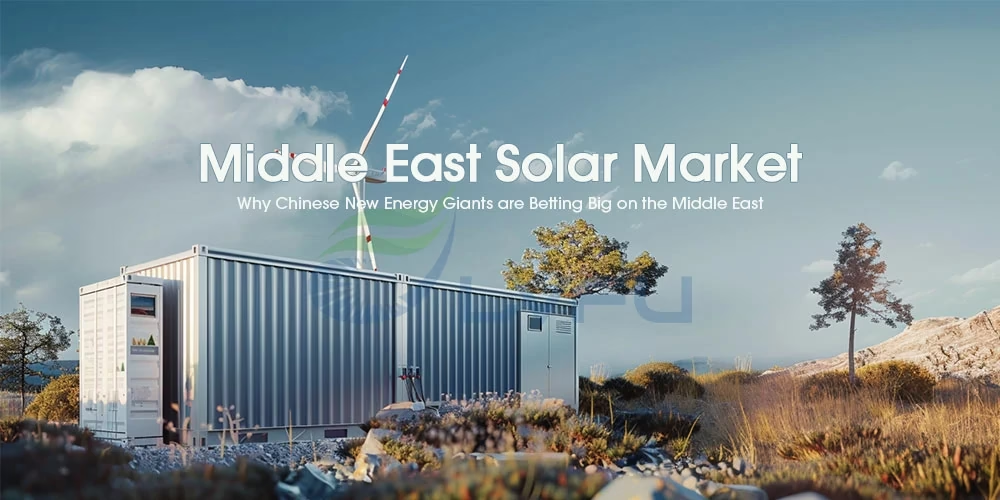How Market Needs and Trade Barriers are Shifting Strategy in the Middle East Solar Market

The Green Ambitions of Oil Nations Pull In Chinese Partners
Vast deserts and powerful sunshine are turning the Middle East into a global hotspot for renewable energy. As a result, this creates a powerful market pull that is actively attracting Chinese companies. Furthermore, ambitious national visions, like Saudi Arabia’s “Vision 2030,” are driving the demand for massive solar projects.
At the same time, the region’s natural advantages perfectly match Chinese technological strengths. As Dr. Zhu Zhaoyi of Peking University notes, “The purchasing power from oil resources is strong, and their economies are in transition. The infrastructure and technology they lack happen to be the strengths of Chinese companies.” Consequently, this complementary relationship is fueling the partnership.
To Avoid Tariff Walls, Companies Build Overseas Hubs
Rising tariff barriers from the Sino-US trade war are pushing Chinese new energy firms to strategically reconfigure their global supply chains. Consequently, the Middle East is emerging as an ideal “overseas hub” to circumvent these walls.
For instance, the US has raised tariffs on Chinese PV modules to 50%. In response, companies are using free trade zones in the Middle East and North Africa. A case in point is TCL Zhonghuan, which is building a 20 GW wafer factory in Saudi Arabia. Once operational, it can leverage Saudi trade agreements to supply the European market at a lower cost, thereby effectively dodging the heavy US tariffs.
A Full Industry Chain Ecosystem Creates Unbeatable Packages
Chinese companies are no longer just shipping products; they are building complete industrial ecosystems. This “bundled delivery” model is creating a comprehensive competitiveness that European rivals struggle to match.
From 2024, their presence has expanded to cover the entire PV chain—polysilicon, wafers, cells, and modules—plus mounting systems and trackers. Jinko Solar is building its largest overseas factory in Saudi Arabia’s NEOM, while Trina Solar set up a 3 GW tracker factory nearby. This allows them to supply every component for massive projects like the Sudair PV Park, from inverters to the steel that holds the panels.

Solar-Storage Synergy Offers a Winning Combo
The coordinated push of “PV + energy storage” is becoming a unique and powerful advantage for Chinese firms in the region. This synergy perfectly matches the Middle East’s need for reliable, 24/7 clean power.
Overseas energy storage orders for Chinese companies saw a dramatic 183% year-on-year increase, with the Middle East as a key growth market. Companies like HiTHIUM are deploying specialized battery systems built to withstand the desert’s extreme heat and dust. Meanwhile, major PV players like LONGi and Tongwei are now entering the storage field, allowing them to offer integrated solutions that are ideal for powering high-energy consumers like the region’s growing number of AI data centers.
Localization Tests True Staying Power
Despite the promise, the path forward requires deep localization. Chinese companies are learning that success means moving beyond “going out” to truly “fitting in.”
Saudi Arabia enforces strict workforce localization policies, requiring companies to hire a certain percentage of Saudi nationals. The business culture also presents a challenge, where an “indirect communication style” can make decision-making processes slow and opaque. Jinko Solar’s Chairman, Li Xiande, advised that negotiations are “long and arduous,” stressing the critical importance of understanding contract details and severe penalty clauses.
To succeed, savvy companies are forming joint ventures with local leaders. This strategy not only purchases market access but also provides invaluable support from local relationship networks, ensuring they can build a lasting presence.

